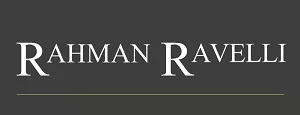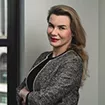Angelika Hellweger of Rahman Ravelli outlines the ending of a long-running disagreement in the art world.
Billionaire art dealer Yves Bouvier's settling of a criminal dispute in Switzerland with Russian oligarch Dmitry Rybolovlev has ended one of the art world's largest and most bitter arguments.
In 2015, Rybolovlev accused Swiss businessman Bouvier of systematically over-inflating the value of €2 billion of art he had sold him - a collection of 38 paintings that included Leonardo da Vinci's "Salvator Mundi".
The oligarch, who was a former client of Bouvier's former clients, began a series of lawsuits around the globe, including criminal cases against Bouvier in Monaco, France and Switzerland. The settling of the Swiss case brings to an end the last criminal case outstanding against Bouvier. The others had been dropped or settled.
In a statement, the Geneva prosecutor said: "The parties informed the Public Prosecutor's Office that they had reached an agreement. The parties requested that no further action be taken in the criminal proceedings and indicated that they would not be opposed to the case being closed."
As part of the settlement, a civil case against Bouvier in Singapore will also be terminated. No other details of the settlement were made public.
After the announcement, Bouvier said it marked "the end of a nine-year nightmare'' and added that courts around the world have "unanimously concluded that I was innocent."
A lawsuit launched by Rybolovlev against the auctioneers Sotheby's is not part of the settlement. He is seeking damages of $380 million from Sotheby's, which he accuses of facilitating valuations by Bouvier. That trial is set to begin in New York in January.
The two men's long-running dispute has highlighted the huge amounts that are spent in the art world - often on the basis of questionable valuations – with little or no transparency and the involvement of middlemen who earn millions in transaction fees.
Bouvier made his fortune by helping those in the art world use freeports. Freeports are a form of free economic area—usually in or around a port of entry—in which goods can be stored without being subject to that country's customs duties. Since these items are considered to be just transiting through, they have not technically entered that country and so cannot be taxed.
Freeports provide a discreet and secure storage service for international art collectors and art acquisitions made by ultra-high net worth individuals, as well as for other high-priced investments such as cars and jewellery. The Louvre's former president Jean-Luc Martinez has described freeports as the greatest museums no one can see. According to a 2016 New York Times article, the Geneva freeport is home to 1.2 million works of art. By comparison, The Louvre has 380,000.
In recent years, freeports have come under scrutiny. Buyers and sellers can conduct transactions anonymously and, as a result, there is a risk of money laundering and terrorist financing. Furthermore, property can be kept out of the reach of law enforcement authorities more easily via the use of freeports.
The content of this article is intended to provide a general guide to the subject matter. Specialist advice should be sought about your specific circumstances.

